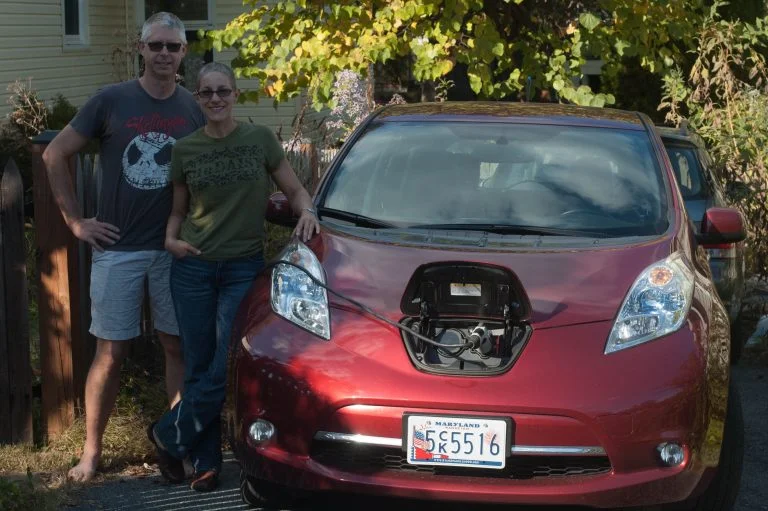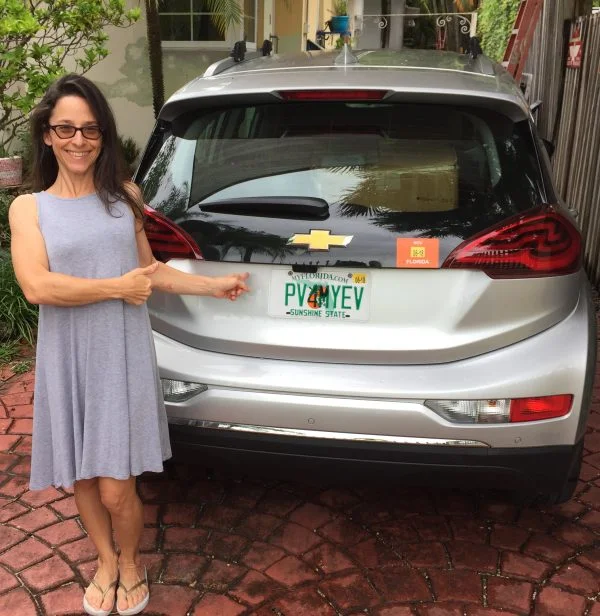Solar and electric vehicles
- Factsheet

Electric Vehicles are skyrocketing in popularity
Electric vehicles (EV) are an alternative to internal combustion engine (ICE) vehicles. EVs require less maintenance and reduce emissions.
The adoption rate of EVs in America is quickly rising. It’s no wonder!
- EVs are becoming more affordable.
- Driving ranges are longer than ever.
- A wide variety of models are available.
- Incentives for purchasing an EV are increasing, thanks to the Inflation Reduction Act.
Solar + Electric Vehicles = A Great Combo

Adding an EV is a beneficial next step after going solar. Solar owners can fuel their EVs with the electricity produced on their roof.
That’s why SUN helps people not only go solar but add EVs and EV chargers. We also fight for increased access to EVs. We advocate for state and federal incentives, progressive pilot projects, and fair charging rates.We are currently running co-ops in multiple states that are bringing together homeowners and small businesses and giving participants the option of installing solar, a Level 2 Electric Vehicle charger, or both. Find out more about our open solar co-ops.
Learn all about EV Charging
Get the scoop on EV charging: the three types of chargers, the benefits, the financing, and more.
State Incentives for buying an EV
Electric vehicle-related incentives vary considerably across individual states. Some are rebates. Some are tax credits. Some vary by the type of electric vehicle. For information on incentives available in your state, visit: State Policies Promoting Hybrid and Electric Vehicles.
Federal Incentives for EVs and EV charging
Federal tax credits make it more affordable to buy an EV. The incentive you qualify for will depend on whether you purchase a new or used EV. Either way, the form to complete is called the Clean Vehicle Credits IRS Form 8936.
Installing an EV charger in your home? There’s a tax credit for that, too. The form to complete is the Alternative Fuel Vehicle Refueling Property Credit IRS Form 8911.
Below is detailed information about qualifying for the federal tax credits.
Note that SUN does not provide tax or legal advice. While we try to provide the most accurate, up-to-date information, we recommend discussing with a tax professional before purchasing an EV or charger. Visit FuelEconomy.gov for an up-to-date list of specific vehicle credit eligibility.
Buying a new electric vehicle
If you’re buying a new electric vehicle, you may be eligible for a tax credit of up to $7,500.
This includes qualified battery EVs, plug-in hybrid EVs, and fuel cell EVs.
To qualify, a vehicle must:
- Weigh less than 14,000 lbs.
- Have a battery capacity of at least 7 kWh
- Be made by a qualified manufacturer
- Undergo final assembly in North America
- Not exceed a set Manufacturer Suggested Retail Price (MSRP). The MSRP, excluding destination fees, cannot exceed $80,000 for trucks, vans, or SUVs. For other vehicles, it can’t exceed $55,000.
The tax credit includes requirements for sourcing of critical minerals and battery components. The sourcing will impact your tax credit amount.
You must purchase the EV for your own use, not for resale. The use must occur primarily in the U.S. Finally, your modified Adjusted Gross Income (AGI) may not exceed a set amount. For married couples filing jointly, the limit is $300,000. For heads of household it’s $225,000. For all other filers it’s $150,000.
Note that you can use your modified AGI from the year you get the EV or the year before. As long as it’s below the threshold in one of the two years, you can claim the tax credit.
The credit is nonrefundable, so you can’t get back more than you owe in taxes. You can’t apply any excess credit to future tax years.
Buying a used (pre-owned) electric vehicle
A different tax credit is available to qualifying buyers of used (pre-owned) EVs. You may be eligible for a tax credit equal to 30% of the sale price. This non-refundable credit has a limit of $4,000. It can’t be spread out over multiple tax years. The used EV must be purchased in 2023 or later.
Just like the tax credit for new EVs, the one for used vehicles includes qualified battery EVs, plug-in hybrid EVs, and fuel cell EVs.
To qualify, a vehicle must:
- Weigh less than 14,000 lbs.
- Have a battery capacity of at least 7 kWh
- Be purchased from a dealer
- Be for use primarily in the U.S.
- Be purchased for use and not resale
- Have a sale price of $25,000 or less
- Have a model year at least two years earlier than the calendar year of purchase.
- Not have already been transferred after August 16, 2022, to a qualified buyer
The purchaser must not be the original owner and can not be claimed as a dependent. You also can not have claimed another used vehicle credit in the three years prior.
Your modified AGI may not exceed $150,000 for married couples filing jointly (or a surviving spouse). For heads of household, the limit is $112,500. For all other filers it’s $75,000. Like the tax credit for new EVs, you can use your modified AGI from the year of purchase or the year before.
Installing an EV Charger
If you’re adding an EV charger to your home, you may be eligible for a tax credit. The charger must be located at a property in a low-income community or non-urban census tract.
The federal government provides a 30% credit, with a maximum of $1,000. Equipment and installation costs are included.
EVs help strengthen our energy system

The problem:
Large, centralized plants generate most of our country’s electricity. It ships across long distances to our homes and workplaces. Those thousands of miles of wires and poles are expensive. They’re also fragile and prone to failing when bad weather hits. Further, meeting spikes in electricity demand is expensive with a centralized system. Demand fluctuates widely from day to day and month to month. We risk brownouts and blackouts when the demand can’t be met.
The solution:
More people are powering their homes and businesses with solar energy. This lowers the need to produce electricity in a centralized way. Electric vehicles are also playing a part in creating a more reliable and less expensive electric grid.
An EV is a battery on wheels. Certain EVs with bi-directional capabilities can store electricity for times when demand is high. This reduces strain on the grid. It makes electricity more reliable.
Many states are piloting programs to study EV owner behavior and learn how adding EVs will impact the grid. These pilot projects educate utilities, governments, and grid operators on EV customer behaviors. They also offer insights into rate design and infrastructure deployment to balance electricity loads and improve grid stability and reliability.
Solar and EV Resources
The Electric Vehicle Transportation Center
Department of Energy Alternative Fuels Data Center
Solar and EV Sizing Guide
State-specific info on solar and EVs
Get the latest on solar straight to your inbox.
Fight for your solar rights.
Everyone has the right to go solar. Spread the sunshine nationwide and in your local community by taking action, joining events, and more.